60 Sri Lanka Travel Tips You Need to Know Before Visiting
Home to glorious sandy beaches, sleepy little fishing villages, intricately built temples, and a strong cultural heritage, Sri Lanka is one of those countries that has something for everyone. Whether you want to visit the “Resplendent Isle” to explore more of its culture or gastronomy, or simply to bask in one of their many beaches and Colombo’s night lights, Sri Lanka has easily become one of my favorite countries in South Asia. Having spent almost 2 months exploring and living in Ceylon, I’ve become pretty knowledgable when it comes to information on travel to Sri Lanka. If you’re planning your own trip to Sri Lanka sometime soon, I’ve put together this giant list of my best Sri Lanka travel tips I really think you should know before you visit.

Sri Lanka Travel Tips: 60 Essential Things to Know Before Visiting Sri Lanka
First things first, Sri Lanka is a fascinating destination that’s rich with history, culture, and some of the friendliest folks you’ll ever meet. The pearl-shaped island sits in the Indian Ocean at the foot of India. It is less than 40 kilometers from India and there are countless things to do in Sri Lanka. Yet it is very different in ambience and infrastructure from its larger neighbor.
Sri Lanka is about one-sixth of the size of California and has a population of about 22 million people. It is a fascinating and picturesque country with a long and rich history.
Sri Lankans are often quietly spoken, gentle souls with good manners and a warm welcome for international travelers. It is hard to believe that in recent memory the country was riven by civil war. This began in 1983 and gradually faded in 2009. Parts of the north of the island have only recently become accessible again to tourists. Sri Lanka is generally safe to travel alone. However, taking into account the recent bombings, it is wise to avoid mass protests and large crowds, use your common sense and adhere to general travel security precautions.
The internal strife of the island is too complicated to go into in-depth, but it evolved around a long-standing tension between the two largest ethnic groups – the majority Sinhalese, (predominantly Buddhists) and the Tamils who are mainly Hindu.
Disclosure: This post (probably) contains affiliate links, and I may receive a small commission if you make a purchase after clicking through one. This is at no extra cost to you and allows the site to keep running! Thanks for understanding.
Sri Lanka Travel Tips | General Things To Know Before Going to Sri Lanka
1. A Bit Of History
From 1815 until independence in 1948, Sri Lanka was part of the British Empire. Known then as Ceylon and not officially renamed until 1972. One of its largest industries was (and remains) tea growing. A shortage of local labor resulted in the British Colonials transporting large numbers of South Indian Tamils to work on the tea plantations. Unfair treatment of some of the Tamil population led to an uprising.
After some time a rebel organization “The Tamil Tigers” started a campaign of civil disobedience and military activities to try to establish an independent Tamil state in the North-East of the country. Since the peace initiative, political developments have resulted in a much fairer government power-sharing system. Tamil and Singhalese members sit on the democratically elected legislature and for the majority, past tensions and difficulties have been laid to rest.
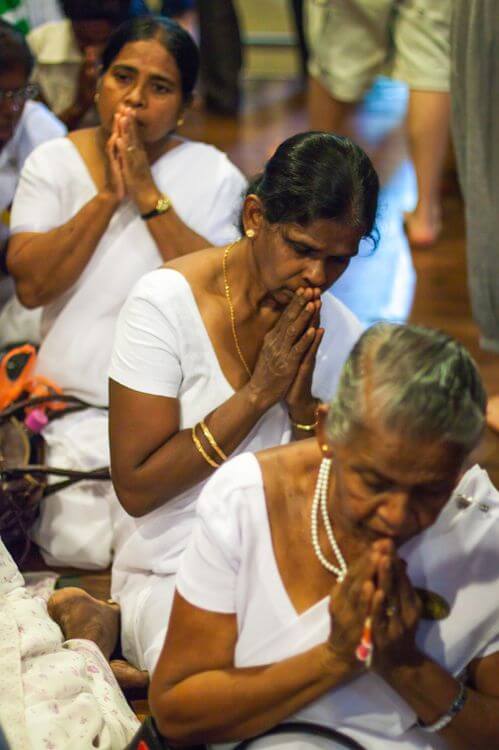
Sri Lanka now has the highest standard of living of all the South Asian nations. Education is high on the list of priorities of locals. Thus, advanced scholars attend the major universities within the country and overseas. Although poverty still exists, especially in rural areas, the government has been successful in reducing it and the life expectancy of Sri Lankans is the highest in the region.
2. Local Data is Very Affordable & Reliable
Buying a SIM card in Sri Lanka, much like buying a bottle of water or finding a tuk-tuk, really couldn’t be easier. While Wi-fi is available at many hotels, hostels, restaurants, and cafes across the country, if you’re planning on spending hours in the countryside, picking up a local SIM is both cheap and straightforward.
If you plan on using mobile data, I recommend buying a local SIM card at the airport in Colombo. Major cell companies like Dialog, Mobitel, and Airtel have the largest networks and are generally the best option for most travelers. 4G/LTE is available if your phone is compatible with the carrier’s network frequencies. To get a sim card you’ll need a photo ID.
Dialog sim cards are available at the airport. For 1299 rupees ($7) you get the SIM card with 6GB of data, plus an extra 4GB Morning Boost. This plan allows you to make up to 600 rupees worth of international and text usage. As well as 350 LKR credit of local calls and texts. It’s all valid for 30 days.
3. Sri Lanka is also known as a Blessed Land in Sanskrit.
4. Burgher people (otherwise known as Portuguese Burghers) are a small ethnic group and community in Sri Lanka. Since the island was in the sphere of Portugal influence long before British Crown set foot on Sri Lanka, they are mostly descendants of Portuguese settlers and local people.
5. If you find yourself in Sri Lanka on a Poya Day, visit the Temple of the Tooth or the Sri Mahabodhi Temple in Anuradhapura. This important Buddhist holiday occurs every full moon. That said, shops and banks are closed on Poya Days, and there is a ban on alcohol sales.
6. While Colombo is the country’s largest city, Sri Jayawardenepura Kotte is the official capital of Sri Lanka.
7. The name of Colombo comes from the Sinhalese “kola-amba-thota”, which literally means “harbor with leafy mango trees”.
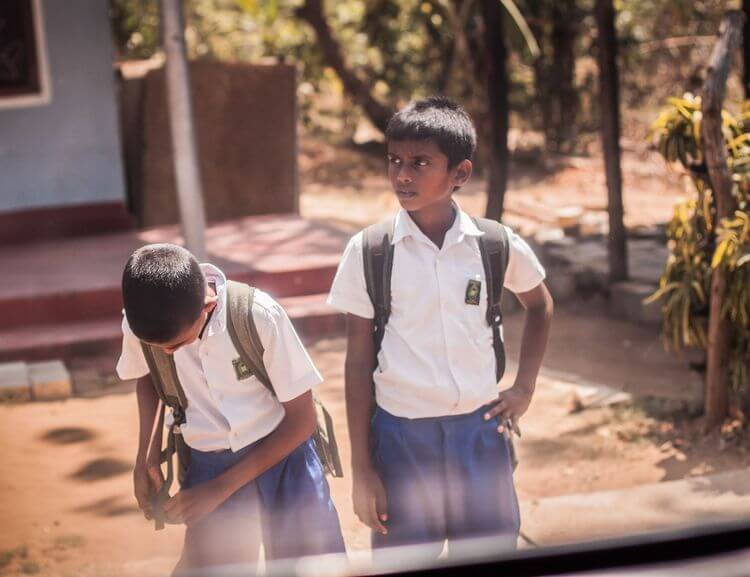
8. Aluth Avurudda is the Sinhalese New Year, which is celebrated in April. It begins in accordance with the national lunar calendar, thus the date of the celebration may vary.
9. Buddhists comprise 70 percent of Sri Lanka’s population. The rest 13% are Hindus and 17% are Muslims, Sikhs, and Christians.
10. Languages of Sri Lanka
Sinhala and Tamil are the national languages of Sri Lanka. At the same time, the majority of Sri Lankans are conversational in English and often use it for official and commercial purposes. There are several English language national newspapers. I had no problem finding a friendly English speaking local to help with directions. One day in Colombo I was approached by a local man who politely asked if he could walk with me merely to practice his English.
11. The sleepy towns of Kalpitiya and Kirinda are great if you are looking for snorkeling and scuba diving experience.
12. The average price for backpacker accommodation is ranging from 700-1200 LKR ($4-7) in the countryside and from 1500-1800 rupees ($8-10) on the coast. I recommend finding family-owned accommodation through Airbnb instead (use this link for up to USD $40 off your first booking!) or Agoda.com, or simply turning up and asking locals where to stay!
13. Locals hate to admit they don’t know something. I run into situations at least twice that they pointed me in the wrong direction rather than admit they do not know the way.
14. Foreigners often pay more than locals. Several times, I managed to negotiate better prices by buying one tourist ticket for two people.
15. Speed limits in Sri Lanka depend on the type of vehicle and are 40km/h in the city and urban areas for motorcycles and heavy vehicles and 60km/h for cars and light vehicles in rural areas. The minimum speeding fine is 1500 rupees ($8).
16. There are priority front seats on the buses. These seats are allocated for pregnant women and clergy. I haven’t seen the ladies though but almost every time I rode a bus there was a monk.
17. Peradeniya Royal Botanical Garden is one of the largest in Asia.
Sri Lanka Travel Tips | Managing Money In Sri Lanka
18. Always Carry Cash
The currency in Sri Lanka is Sri Lankan Rupee. Sri Lankan rupee notes come in denominations of 20, 50, 100,500, 1000 and 5000. The exchange centers and ATMs are widely accessible in the airport and in the main tourist areas. But don’t expect to find ATMs in every small village you visit.
From restaurants, supermarkets to tuk-tuk drivers and tour operators, Sri Lanka is a cash-loving country. Keep a reasonable balance of small bills and coins on you at all times. Although you can pay with a credit card in hotels, restaurants, and grocery stores, there are small shops in rural areas where only cash is accepted.
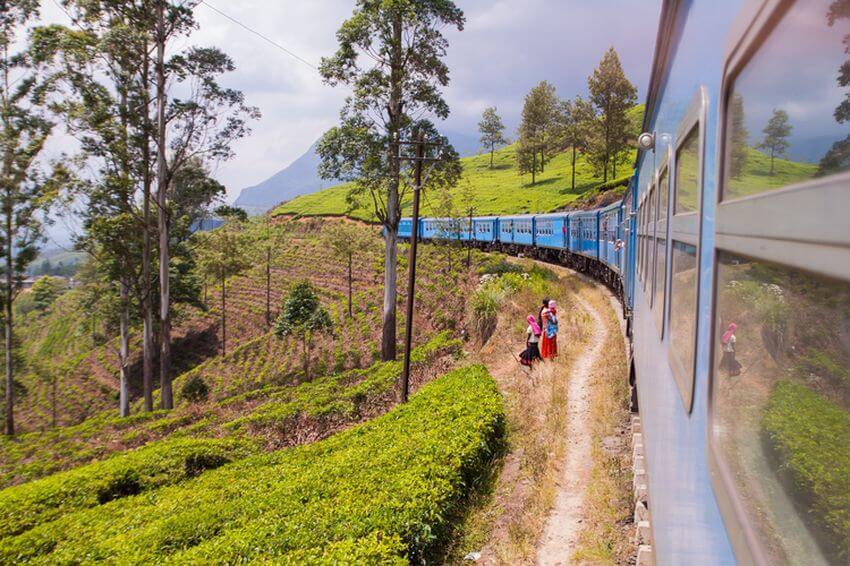
While ATM and card facilities are pretty widely accessible in the main tourist areas, they aren’t that wide-spread in rural regions. I’d recommend withdrawing as many Sri Lankan rupees as you need from the ATM rather than a currency exchange. Then use the money to pay your way instead.
19. The Country Don’t Expect You to Tip
I’ve never really encountered a tipping culture in Sri Lanka, although I have tipped when I’ve felt that a restaurant or delivery service has been worthy of it.
I tend to stay in guesthouses rather than hotels, where a service charge and tax is generally added on top anyway. On the few occasions that I tipped a tuk-tuk driver, they actually chased after me to give me my change (one flat out refused to take my tip!).
A 10% service charge is usually included in restaurant bills in bigger cities. However, in small local eateries, it’s not normally included so if you’ve had good service, do leave a small tip – anything up to 100 LKR. For tour guides, tip if you deem the service to be worthy, but generally no more than 20 percent of the cost of the tour.
While tipping isn’t really a thing in Sri Lanka, bargaining absolutely is! Be sure to negotiate lower prices, particularly for tuk-tuks or shopping in markets.
Sri Lanka Travel Tips | Transport And Getting Around Sri Lanka
20. Getting to Sri Lanka
Most visitors will arrive at Bandaranaike International Airport that is about 34 kilometers north of Colombo, the country’s largest city. SriLankan Airlines connects Colombo with many Asian and European destinations. Alternatively, you can reach the island with British Airways, Emirates Airlines, and Qatar.
If you’re a first-time visitor to Ceylon you should know that flying domestically isn’t very common. Because the island isn’t that big. However, there is a number of carriers offering daily scheduled flights within the country.
21. Getting Around Sri Lanka by Public Transport
The country has an extensive network of good roads between the biggest towns and cities. If you have a valid international driver’s license and plan on renting a car or scooter you should also know that in Sri Lanka people drive on the left-hand side of the road. Make sure you wear a helmet and that you have appropriate medical cover.
There are a National rail network and an efficient highway bus system. While the nation’s road infrastructure has undergone some renovations recently, you should put in extra time when getting around in Sri Lanka.
22. Exploring Sri Lanka by Scooter
Renting a scooter in Sri Lanka costs on average 1800 LKR a day. It is a great way to save money on getting around, explore places, catch up on some adventure and travel at your own pace. You can find restaurants and guesthouses that have their own rentals. These are often cheaper than rentals in popular tourist areas. I managed to get the price down to 1150 LKR per day and it is the cheapest fare I ever heard of so far.
23. Sri Lanka by Tuk-Tuk
Tuk-tuks are everywhere on the island so they were my primary mode of transportation when I was backpacking in Sri Lanka. There probably isn’t a family where somebody doesn’t own a nimble three-wheeled vehicle. Three-wheelers are the most cost-effective means of transport for short-distance travel.
24. One of the most important do’s, when you travel around Sri Lanka, is to always get a tuk-tuk with a meter. I’ve seen countless situations in which people get scammed by tuk-tuk drivers only because they trusted them too much. More on that below.
They will often tell you that the taximeter is broken. Get out and find another one. Going without a taximeter and failing to negotiate the price beforehand in most cases means you will pay two, or three times more.

At the same time, there are areas where drivers don’t use the meter. In this case, I’d recommend asking locals for the fair price to get to your destination, then negotiate with the driver. it’s also wise to have smaller denominations and coins for change.
25. If you don’t feel like haggling, in major cities you can take advantage of sharing apps like PickMe and Uber. PickMe is a local app. It usually takes 15-20 minutes for the car to arrive, but eventually, it’s all about the convenience. In addition, you’ll get a price that is almost equal to that in a tuk-tuk.
26. Cover your head with a sarong and make sure to wear a helmet and reliable motorcycle goggles to protect your eyes. Since tuk-tuks are open from all sides, the dirt and smoke from passing by cars will end up on sarong wrap, not on your face.
27. Traveling by Bus in Sri Lanka
Another cheap way to travel around is by bus. Particularly when solo backpacking through Sri Lanka. It might not be a convenient option in Colombo due to transportation problems and frequent traffic jams. But it is perfectly fine to use buses when traveling between cities.
The network is also pretty extensive, so you can navigate Sri Lankan roads with ease. Although be warned that the roads are bumpy, so some journeys take longer than others.
In remote places using buses can be confusing. To be frank, it can also be confusing in big cities. Since the regular buses outside Colombo are cheap and crowded, it may take some time before you begin to feel more confident.
Traveling by bus in Sri Lanka totally worth any confusion at first because it is a great way to save money. You can buy bus tickets online to overcome language barriers as well.
Depending on where you need to go, you may find privately-run buses. While there’s not much difference between state-run and privately-run buses, the latter option is often the only way to reach your destination.
When it comes to finding the right bus, go to the local bus station and tell an employee where you want to go. Sri Lankans are genuinely kind and helpful, so they will gladly point you to the right bus. You can also ask your reception manager on which routes to take. Folks in guesthouses are often knowledgeable, chances are they will point you to more comfortable air-con buses.
Although there are designated bus stops, you can generally wave at an approaching bus to stop from anywhere along the road.
For those traveling Sri Lanka on a budget and looking for an authentic Sri Lankan experience, this is your best bet.
Here are some tips for bus travel in Sri Lanka:
- CTB buses and private buses are really cheap;
- You’ll need a small change to pay your fare;
- If you travel with a backpack, you can place it on the front engine hub next to the driver or in the rear luggage compartment;
- Get on/off and settled quickly – these buses don’t wait for anyone.
28. Getting Around Sri Lanka by Train
There are a lot of reasons to travel by train in Sri Lanka: they are cheap, they take you through arguably one of the most scenic train routes in Ceylon as you travel from Kandy to Ella. However, the best thing about Sri Lankan trains is that they work like a charm – saving you money while also allowing you to stay in between carriages and see the country like a local.
Virtually any one-week Sri Lanka itinerary includes one of the three main routes from Colombo. North from Colombo to Mannar and Jaffna. East to the Hill Country (Kandy, Nuwara Eliya, Ella, ending in Matala and Badulla). South to Matara. All these routes are incredibly beautiful.
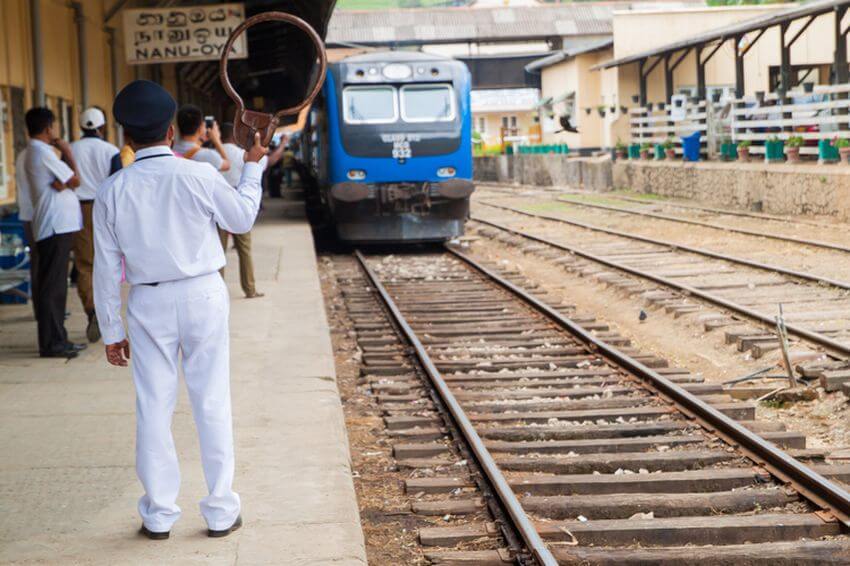
Book a first-class ticket if you want air-conditioner. Or get a ticket in the 2nd or 3rd class if you want to mingle with locals. I didn’t see much difference between the last two types, both were very busy. Get your ticket well in advance if you travel from Ella to Kandy.
Trains in Sri Lanka pass through much more countryside than any road. In most cases, your train journey is going to travel through scenic green hills, rice fields, and tea plantations. You will catch glimpses of lush green landscape and you won’t be distracted by hectic traffic. Taking in the sunset over a picturesque valley as you sit on the train towards your next Sri Lankan destination isn’t only inspiring but also romantic.
A few Tips on Taking the Train in Sri Lanka:
29. Book Ahead
When I first visited in 2013, the Kandy to Ella train ride was far less touristy than it is today. These days, the train can get pretty packed, and you’ll need to book your travel in advance (usually 1-2 days ahead). You can buy your ticket at the train station, or at 12GO Asia.
30. Book 3rd Class
The third class is evidently the cheapest option, and in my opinion, it’s also the best as you can sit on the steps or hang out the door for some fresh air. It’s generally also full of friendly locals keen to chat, which only adds to an already awesome experience!
Sri Lanka Travel Tips | Your Guide to Sri Lanka’s Weather
31. Coastal Sri Lanka has hot weather throughout the year. But you can notice that various sides of the island can be affected by heavy monsoon rains at different times. The first four months of the year are usually the most stable with regard to the heavy rains. It is usually considered ‘high season’ for travelers. This said the island enjoys a steady stream of visitors all year round.
If you want to know when is the best time to visit Sri Lanka you should first know the following. In a nutshell, there’s no best time to travel to Sri Lanka mainly because the island’s weather is not defined by seasons, but by monsoons instead.
The southwest of Ceylon (Mirissa, Galle, Negombo) sees monsoons from May to September. While the northeast (Trincomalee, Jaffna) – from October to February. So as you can see there are areas in the country throughout the year where it’s not raining hard but you need to adjust your itinerary accordingly.
You should also know that it is very uncommon to rain for the entire day. You can expect 15-20 minute showers in the middle of a monsoon. But they never stopped me from traveling around Sri Lanka. Just bring a waterproof rain jacket and you’re done. The temperature stays consistent throughout the year at 26-30C (78-86F) but might go up even higher in April and May.
Sri Lanka Travel Guide | Food & Drink in Sri Lanka
32. Like neighboring India, Sri Lanka is famous for its curry and rice dishes, some of which can be very spicy. As well as mutton, fish and chicken curries, lentils are also popular. Sri Lankans are proud of their food. That is why you should try it at least once. I’m not talking about spicy food, I just recommend avoiding Western dishes like burgers, and salads. These are usually expensive and have a bad plastic taste.
Numerous pastries, sweets, and seasonal fruits can be found everywhere – favorites include pineapple, mangosteen, and bananas. Tea, of course, is the drink of choice for many Sri Lankans and the most popular beer is Lion Lager.
33. Sri Lanka is Home To The Finest Tea in the World
Sri Lanka ranks among the largest producers of tea in the world, so if you’re a tea lover, this is a place for you.
If you are looking at the cup of tea in front of you, chances are it was grown and harvested in Sri Lanka. Ceylon tea is renowned worldwide and it’s one of Sri Lanka’s primary exports product. Sri Lankans are extremely proud of their tea heritage, and to fully understand the tea culture I spent a few days in Nuwara Eliya.
Here you will find many examples of colonial homes and hotels built by the British tea planters to escape the heat. There are some excellent walks nearby.
I loved visiting a tea plantation. The view of the endless tea bushes will stay with you. The tea pluckers neatly trim them and they are arranged in very picturesque rows, which follow the contours of the hillside. The plantations often have a museum nearby where you can learn about Sri Lanka’s long-established tea industry and browse old photographs. There is usually a tea shop where you can sample the product to refresh you after your visit.
Be sure to take the trip up to Lipton Seat. Arguably the most famous viewpoint, where Sir Thomas Lipton used to sit and contemplate his emerald green tea fields and the magnificence of Sri Lanka’s high country.
34. Top Foods & Dishes You MUST try in Sri Lanka
I ate a lot of unbelievably delicious food when I was in Sri Lanka, and there are undoubtedly Indian influences in the spices, breads and pickles served in the streets. However, its flavor, the combination of spices and taste makes it so different from India and any other country in Asia. The more you eat, the more you feel it.
Pro Tip. Try the street food, I’m yet to encounter anything I don’t like! Here are a few of my favorite dishes and street food delights to look out for:
35. Rice & curry
As they say, there are two traditional meals in Sri Lanka: curry and rice or rice and curry. Although a joke, this statement is kind of true. In Sri Lanka, you can try it in all sorts of different flavors, sizes and colors. This kind of food is very cheap in comparison to meal prices in the United States. You can get a proper curry meal for less than 300 rupees which is about $2.
36. Hoppers
These little pancake-like snacks are served mainly for breakfast with a mix of red onions and spices or eggs. They are made from fermented rice flour and coconut milk and baked in small round pans. String hoppers, which are made from a mix red or white roasted rice flour with water to make a dough, are more like nests of spaghetti. Best served with a mild curry sauce (kiri hodi) and a coconut sambol.
37. Kottu & Kottu Roti
When in Sri Lanka you should definitely try Kottu. This ubiquitous fast food is made from fried godamba roti (Sri Lankan parathas, or crispy bread), vegetables, eggs and, sometimes, fish or meat. When you place an order, the kottu chef will fry and chop the roti into oblivion by using two large metal blades. The thunderous sound of chopping blades can be heard from half a mile away. The cost of roti is between 175 and 300 rupees.
While Sri Lankan food is famous for its curries, foods there can be hot or very mild or can perfectly combine these qualities depending on individual preference. If you are still unsure whether you should try Hot Spices, just ask for little or no spice in your meal.
Most of the Sri Lankans eat only vegetables with large communities of farmers who opt for rice and curry as their main food. The teardrop of India is one of the most vegan-friendly countries in the world, so if you’re a vegan or vegetarian, you’ll be in paradise.
38. Tips & Tricks About Drinking Water in Sri Lanka
While tap water in Sri Lanka isn’t as bad as you might have heard, buying bottled water is still your best bet to avoid traveler’s diarrhea and vomiting. I tend to avoid drinking tap water outside Europe but you have to stay hydrated during hot, humid weather.
39. Buying water in local shops is way cheaper than ordering in restaurants or cafes. Always check for a price tag since some vendors in touristy areas may add up to an extra 40 LKR per bottle to cheat tourists.
Although water is generally safe to drink, the unfamiliar local bacteria it contains can upset your stomach just from being different.
I use tap water to wash fruits and vegetables. I also drink boiled tap water sometimes to save money. However, filtered water should be your choice if you want to reduce your plastic consumption and help save the environment.
Get a water bottle that you can refill at hostels and restaurants. Or get a water bottle with a filter in it. Or use LifeStraw water filter. There are plenty of eco-friendly and cheap alternatives to buying plastic water bottles!
Sri Lanka Travel Tips | Staying Healthy in Sri Lanka: Top Safety Tips
40. Is Sri Lanka Safe for Travelers to Visit Now?
In a nutshell, Sri Lanka is safe to visit.
Ever since the civil war ended in March 2009, there’s been terrorist attacks of 2019 that did alter things slightly. Thus, the military and police presence is felt in the north of the island nation, at airports, hotels, with an abundance of checkpoints on roads. But that’s a reality you’ll quickly get used to.
You should take note of the following for your trip to Sri Lanka:
41. Don’t be surprised if you have to go through security checks during your trip. If you do, just follow the instructions of the military. But that never happened to me.
42. Particularly in the east of the country, you may come across military checkpoints where buses or trains have to stop. So make sure to bring your passport wherever you go. That never happened to me either though.
43. You should never ignore signs reading “No Entry” or suchlike. While there are still ongoing mine-clearing campaigns, minefields still pose a minor risk. Naturally, there will always be a sign, or more likely a security officer, telling you to turn around.
44. Always make sure to dress appropriately when visiting temples and religious sites.
45. As Sri Lanka is experiencing strong tourism growth, pickpocketing and theft can happen. Protect your valuables, e.g. as I did by using a Pacsafe. Try not to flash your valuables, and avoid putting your credit cards and cash in back pockets or easily accessible areas of your bags.
Only upscale hotels have safes in the rooms. I never had any bad experiences ourselves and didn’t hear of any pickpocketing or burglaries from other travelers. But still, better to be safe than sorry.
46. Tuk-Tuk Scams
I have faced unpleasant encounters with tuk-tuk drivers twice, once in Colombo and once in Galle, during my first trip as a tourist back in 2011. The circumstances were slightly different in each case. In hindsight, I must have looked lost (had either a smartphone or a map in hand) because something prompted a well dressed, English speaking Sri Lankan man to start talking to me. In a friendly, conversational way he asked me what I was looking for. After a short talk, he gave a few recommendations that I happily accepted. The man waved over a three-wheeler and confirmed with the driver that it would be a very cheap ride for me.
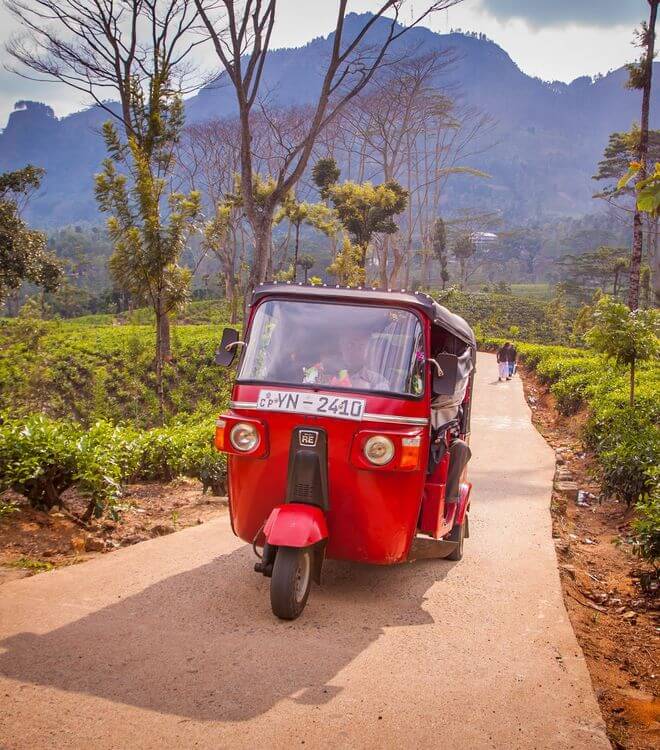
In the Colombo incident, the man recommended that I go to his friend’s restaurant for a nice dinner and take a tuk-tuk that only cost 50 LKR. It was a bit shabby restaurant far from the motorway and much to my disappointment it was pricey and served mediocre food. When it was time to go home, I was able to find a couple of drivers who charged way higher fare than I expected.
I thought they were trying to cheat me with the high price but later realized that what they were asking for was fair (as far as autorickshaw prices go) but that the trick was to get me to spend my money at the restaurant.
When I was scammed in Galle, the young man suggested that I visit the local silk factory and a tuk-tuk driver would take me around all day for just 200 rupees. At the time the activity sounded interesting and harmless. It wasn’t until later did I realize that the silk factory was next to an expensive silk store and that part of our route involved our tuk-tuk driver taking me to a questionable souvenir shop with a pushy shopkeeper and then to a jewelry shop.
47. How to Avoid the Scam
A tuk-tuk ride for an attractively low price should ring alarm bells out loud, particularly if it’s less than a dollar. At the time I had no clue what the going rate was, only that it was “cheap” according to the guidebooks. Note to self: if the price is too good to be true, it probably is a scam.
It may seem rude to reject a stranger’s help, particularly from someone who seems genuinely interested in helping a foreigner. However, it was a little odd that these men were adamant about providing help when I didn’t ask for it. If I could do it over again I’d simply decline the offer, firmly but politely. And I’d put away that redundant map!
48. Stilt Fishing Photo Scam
Another unique phenomenon of the country is the stilt fishermen who stand serenely on forked branches just off the waterfront along stretches of the south coast. They balance on long poles a few meters out to sea and cast their rods from the pole. Their silhouettes provide stunning photographs against the setting sun. However, don’t be surprised when you take a photograph if the fisherman or an accomplice appears to ask for a small fee.
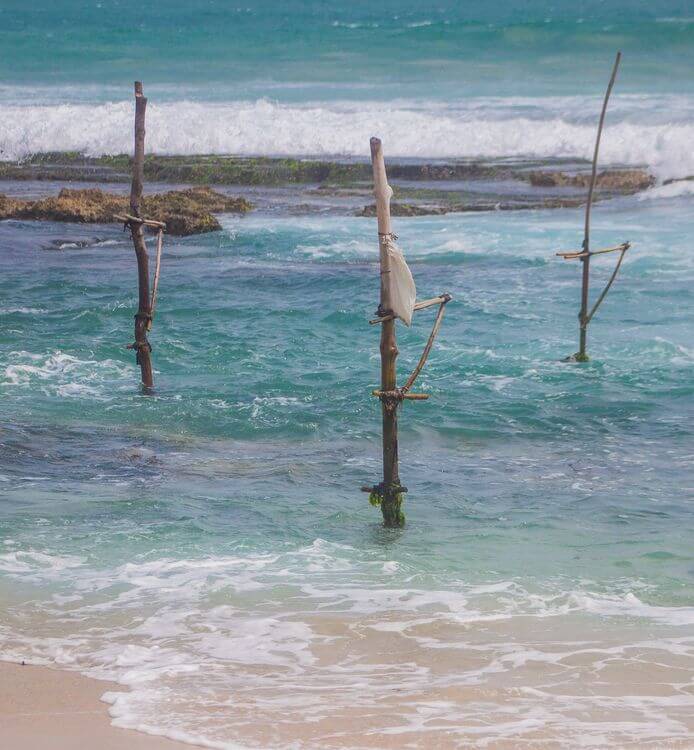
49. Get Travel Insurance
You know Murphy’s law; Anything that can go wrong will go wrong.
During my last trip to the west coast of the United States, I got sick in San Francisco. When you travel, the unexpected happens. It’s better to be prepared in the event you need it. Although there are government hospitals in Sri Lanka, this is not where you want to end up in case of an emergency. Private hospitals offer more personalized care and treatment to patients, but they are expensive.
I travel with World Nomads and find they’re the best when it comes to providing a high-value coverage with 24-hour assistance 365 days a year, at affordable rates.
Sri Lanka Travel Tips | Sightseeing Sri Lanka
50. There Are a Lot of Things to Do in Sri Lanka
Don’t let its size fool you, Ceylon is an incredibly rich and diverse county that offers plenty of landmarks and sights to explore. For an island roughly the tiny size of Austria, it takes time to properly explore the island. So don’t try to fit everything in your one-week itinerary if you want to really immerse yourself in a vibrant and fascinating culture steeped in ancient history and tradition. Set priorities as it will definitely take you more than one trip to get to know this island.
51. Don’t Get Stuck On the Beach
While the country boasts some of the best beaches in the world, Sri Lanka has so much more to offer! One may roughly divide Sri Lanka into 3 main parts: beaches, mountains, and historic sites. My personal favorite are mountains. Nothing can beat breathing the crisp mountain air enveloping the spectacular peaks as you hike to little Adam’s Peak in Ella. It might sound like a challenge, but It’s well worth the effort!
UNESCO World Heritage Sites in Sri Lanka include ancient cities of Anuradhapura and Polonnaruwa where you can see the temples and palaces built over a thousand years ago. If you’re a nature lover spend some time in Sinharaja Forest Reserve full of endemic trees and species.
52. The North Is Very Different To The South
The country’s northeast region is a world apart from the rest of Sri Lanka. It’s much closer to India than Colombo, so its location has helped the region retain its own unique character. Due to Tamil refugees, who formed the largest part of the expatriate population after 1983, the area’s culture owes as much to Hindu India as to Buddhist Sri Lanka.
For many years, the area was out of reach to tourists due to Sri Lanka’s bloody ethnic conflict. Today, when the region is rebuilding and healing slowly, tourism has begun to recover too. Offering a very different experience to the rest of Sri Lanka, Jaffna boasts so many historic sights, authentic places, and attractions. What’s more, it offers travelers an incredible opportunity to explore a region that’s emerged from nearly three decades of isolation.
53. Don’t Spend Much Time In Colombo
For first-time visitors, I recommend spending at least 2-3 days in Colombo.

While many tourists skip Colombo altogether, I think the country’s largest city, although hectic, and busy, is worth checking out for two reasons: food and shopping. No other city on the island has such an enticing street food scene as Colombo. You can eat like a local, and immerse yourself in the sounds and aromas of the whirling Pettah Bazaar. Let your taste buds set sail on a culinary adventure while sampling foods from around the world as well as from different regions of Sri Lanka. Spot hole-in-the-wall eateries as well as hip coffee shops. And you can buy some awesome Sri Lankan-made goods like colorful local art and textured fabrics, which are not to be found in souvenir shops in smaller seaside resort towns.
Sri Lanka Travel Tips | What To Take To Sri Lanka: An Essential Packing Guide
54. There were really only two essentials that I didn’t think to pack: An umbrella (I just bought it there) and a raincoat (I bought a cheap plastic rain poncho). Some places, like the highlands, get a lot of rain. Keep in mind, having a raincoat is important as the torrential rain will just make you feel cold and downright miserable.
55. If you have plans to visit the hill country, you may want to pack a warmer sweater or jacket as temperatures can drop below 10-15 C (50-60 F). It is especially cold at night. So layer up! I would suggest bringing a sweater because the luxury bus gets a bit cold when air-conditioner works at full blast.
56. If you are likely to use public transport, then a backpack is the most practical way to carry your stuff. Suitcase wheels are meant for the smooth linoleum floors of an airport, not the road sections with poor surface and geometry. Even if your plan to settle into one destination and take short day-trips from there, it’s wise to get a small compressible day pack that can be easily stored within your larger pack.
57. I also generally recommend bringing a Pacsafe. It’s a portable steel-reinforced bag that has clippable zippers and a strap that you can lock around chairs, tables or other immovable objects. Consider getting one if you’re planning on staying at guesthouses or campsites as they typically don’t have safes and relatively little security from the outside.
58. As I said, Sri Lanka isn’t exclusively Buddhist. There are many Muslims and Hindus, and they’re not too keen on seeing displays of affection and topless sunbathing. So if you want to behave respectfully, bring a sarong and T-shirts with sleeves covering your shoulders and a long skirt (for ladies) and long shorts (for men) that covers your knees if you are planning to visit a temple (you definitely will).
59. Here’s another travel tip for Sri Lanka that you should know. It might sound funny, but bring toilet paper or have a small pack of tissues on you. Buy toilet paper and hand sanitizer at a local grocery store or just grab a roll at the hotel. In lots of toilets, there’s only a little hose that people use as a douche, while roadside toilets usually don’t have toilet paper. Traditionally, people use their left hand for cleaning which is why you only eat with your right.
60. You can buy sunscreen and mosquito repellent locally. It’s a lot cheaper than in the rest of the world and much better adapted to local mosquitoes. It’s getting easier to find these products and you won’t have any trouble finding them in Colombo or in main tourist towns in south Sri Lanka. But don’t expect product diversity though.
Have you been to Sri Lanka? What was the highlight of your trip and what travel tips Sri Lanka would you advise others? Let me know in the comments. I’m looking forward to it!
PIN FOR LATER!



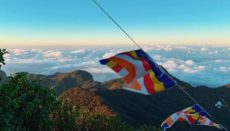

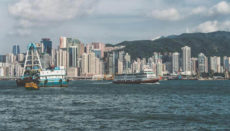
Sorry, the comment form is closed at this time.